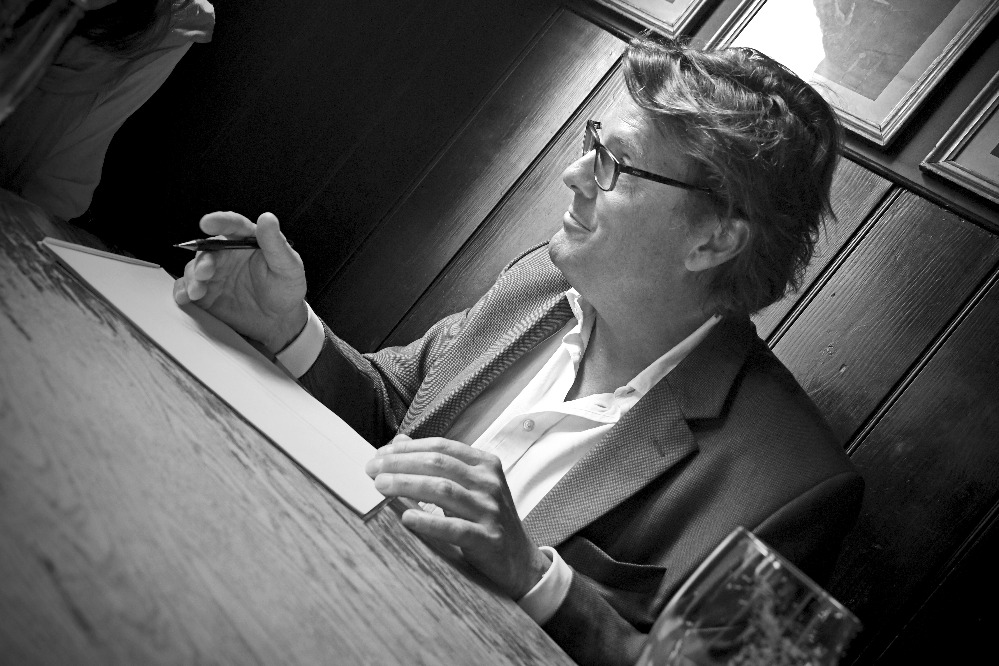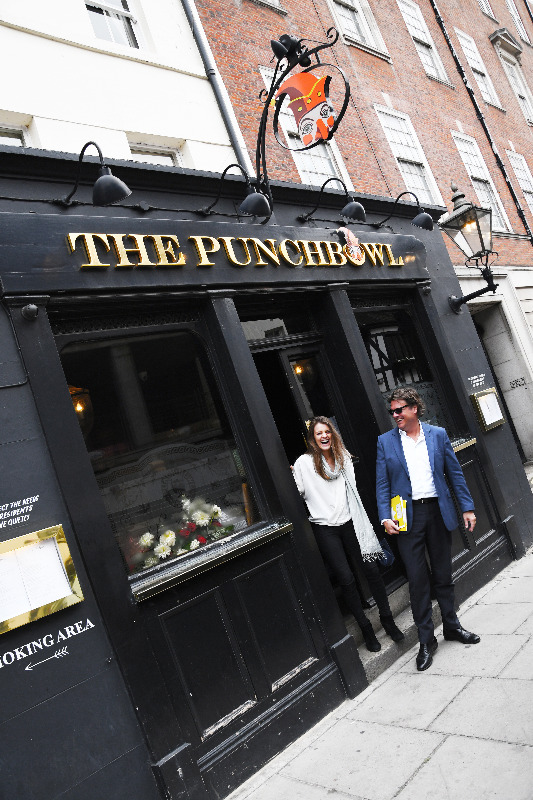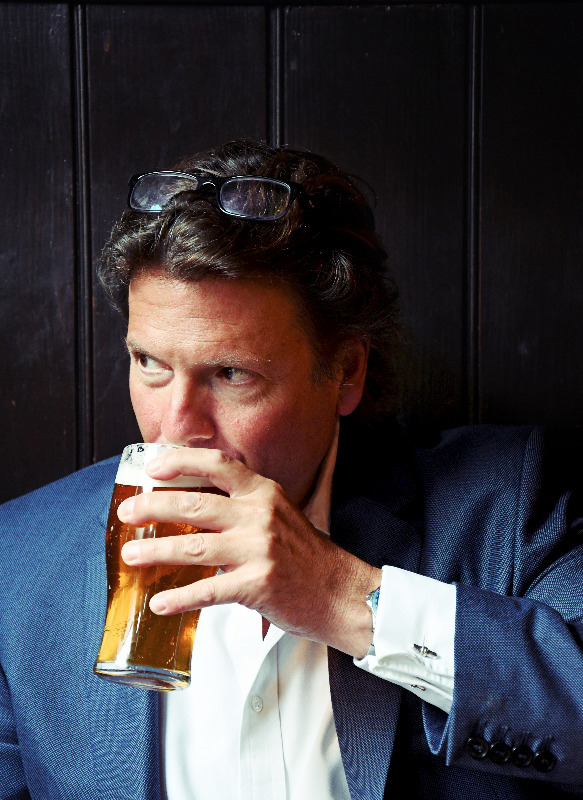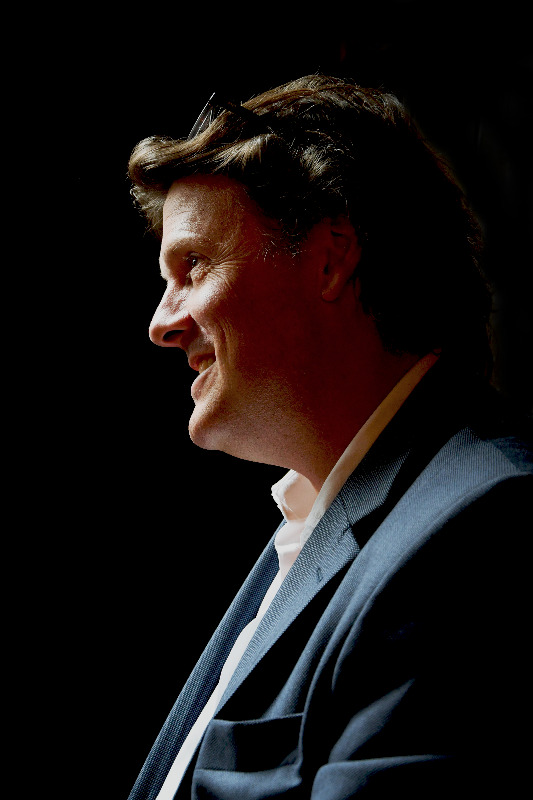On the sesh with Gresh
Steve Gresham joins SuperyachtNews at the pub to talk about his career and the world of superyacht design…
Is there a better way to get to know the man behind the drawings than taking him to the pub for a few beers? Superyacht designer Steve Gresham has a truly fascinating approach to our market and a design philosophy that is based on a lifetime of being connected to the water. We head to one of London’s most famous pubs to find out more about this philosophy and the journey Gresham has taken to be where he is today.
Nestled behind one of the busiest squares in London, Gresham Yacht Design HQ sits on quiet Farm Street in Mayfair, just a stone’s throw away from some of the fantastic pubs that the city has to offer. The Punchbowl, just at the end of the road, couldn’t be a better venue for our meeting. Famed for formerly belonging to Madonna and Guy Ritchie, the pub has a gorgeous vintage feel to it, and a pretty good draught beer selection, which certainly is a bonus. After propping up the bar and ordering two pints, we sit at a table at the front of the house, and start from the very beginning of Gresham’s story.
“I was born in the Bahamas and I lived there for the first 10 years of my life – I absolutely adored it,” he begins. “It was on an island and my mother was a nurse, and my father worked for a navigation company, so they met in the Bahamas. We used to have this little red Mini and drive down to the beach with my mother and as many toys as I could carry in my arms, a parrot called Mr Schlitz, the dog called Tiggy and, of course, the cat.” Gresham’s early life was always marine-orientated, in the Bahamas and even when he moved in 1976 to Rutland, in the UK, where a huge reservoir was built and windsurfing was particularly close to his heart.
“That sort of being in the water, next to the sea, came from an early age,” says Gresham. “But I was also really good at drawing, primarily because of the practice that I did – there is even a callus on my finger here from holding the pen. Originally, I wanted to be a fine artist, and then I discovered that there were people called designers who did all sorts of really interesting things – they could build things and design cars, aircraft, boats and all sorts of stuff.” Gresham then headed to Coventry University, an institution that has produced so many well-known names in the superyacht industry and one widely recognised for its outstanding design courses.
“When I got to university I thought all my Christmases had come at once because it was such great fun,” says Gresham. “And the first person I spoke to when I walked in the door was Jonny Horsfield. He was in the studio, [we] chatted for a few minutes and then [he] asked ‘Do you fancy a pint?’. So we met, and literally within a few moments we were on our way to the pub. We probably had about four or five pints and then we spent the next four years as best mates. We lived in the same houses, we shared the same cars. Mick Leach was a year ahead of us, but Marc Smith, Jonny Horsfield and myself lived together.”
Both Gresham and Horsfield were on the industrial design course, a sandwich course that produces all kinds of automotive and transport designers due to its flexibility in design study. Gresham’s original plan was to become a car designer, but that quickly changed during his time at university due to the constraints of automotive design. It was then that he turned to yacht design.
“So I decided that I didn’t want to go into cars, and because our course was a sandwich course, I wanted to have a bit of excitement. Also, because it was 1985 – it was Miami Vice – we all went out in espadrilles. We all wanted to be Sonny Crockett, and Wham was there and I looked a little bit like George Michael,” says Gresham. “But I decided that I wanted to get a job for my sandwich course in Florida. So I bought a ticket, packed a bag with my clothes, my sleeping bag and a tent. The plan was to fly out and, five weeks later, fly back. I didn’t know where I was going to go, where I was going to stay.”
Gresham knew he wanted to work for an American boat builder but had no contacts out there and relied on a US directory to look up boat/yacht builders to try to arrange a placement. With no concrete plan, Gresham pitched his tent in various places outside shipyards and recalls spending nights in everglades and beaches before landing his job.
“Those days of having a bit of freedom and doing whatever you like, actually I think that transcends into my philosophy with design, I love the freedom. My whole philosophy with design is trying to push the boundaries a little bit, try and do something different.”
– Steve Gresham
“I used to hitchhike everywhere when I was younger, and all the time [when] I was in the States,” Gresham recalls. “Although I did carry a knife with me for protection, it was just like a scalpel in case someone tried to grab me. Those days of having a bit of freedom and doing whatever you like, actually I think that transcends into my philosophy with design. I love the freedom. My whole philosophy with design is trying to push the boundaries a little bit, try and do something different, and different is not always nice; it’s a tricky one to be creative and to produce something which is attractive and new. It’s very easy to do something that is different but it might be unattractive, so [attractive and new] is what I try and achieve, but I don’t always achieve it.”
For Gresham, this freedom and boundary-pushing approach to design is something that has manifested itself in fascinating ways across the fleet. He pulls out some plain paper from the pub bench to illustrate how the unique lines of 123m Lürssen superyacht Al Lusail, created while he was at H2 Yacht Design, were developed with this philosophy of freedom and the understanding of wave motions.
“I served my time in a naval architects’ office and worked for ex-off-shore powerboat world champion Donald Shead, who is a real influence on the work that I do today,” says Gresham. “He did some fabulous boats, and I worked with him and a naval architect and I learnt how to build a boat. He gave me my reign and let me go out and manage jobs on site and in the yards and things like that. But you have to do that and be at the yards.” It’s this kind of experience that Gresham says is imperative to his career. That and the drive to learn and understand the maritime world is something which comes after a long time working across the entire spectrum – from sleeping in a tent outside a yacht builder to working with naval architects to fully understanding what goes into these incredible vessels.
"When somebody comes out of university – and I love the work that is being produced by the young guys at the moment but they need the experience – they need to know how a boat is built and what they can and can’t do. But where do you start? For someone that has just come out of university, they’ve got to start somewhere and I have to say that the talent is impressive when you see some of these guys."
- Steve Gresham
“Every yard is the same; it’s a s***hole because it’s a nasty business, but to be able to say that to a guy who is bashing metal that knows that you know what you’re talking about is worth everything,” explains Gresham. “This is the difference. When somebody comes out of university – and I love the work that is being produced by the young guys at the moment but they need the experience – they need to know how a boat is built and what they can and can’t do.
“But where do you start? For someone that has just come out of university, they’ve got to start somewhere and I have to say that the talent is impressive when you see some of these guys. But because of all the CGI [computer-generated imagery] and the modelling that you can now do, you can hide a bad design within a very pretty CGI.”
In today’s market, with so many regulations and requirements, it’s essential for young designers to have an understanding of how a yacht performs. Gresham’s career in striving to understand this makes those designs that bit more comprehensive, and this is something he encourages young designers to do – find the experience and learn all there is to know about superyacht construction. Once this grounded knowledge is there, that’s when boundaries can be pushed and extraordinary things can be created.
“Eco [now Zeus] is probably one of my favourite yachts of all time. I have so much respect for Martin Francis. He’s is such a star and he is also the loveliest person,” says Gresham. “When Eco was for sale he said to me, ‘We’re not showing people the boat to buy, we’re interviewing them to see if we are going to sell it to them’. Its spectacular creation was the vison of the owner, which is such an incredible aspect of superyacht design.”
Currently, Gresham is working on a ground-breaking new conversion project called Alucia2, driven by superyacht owner and philanthropist Ray Dalio. It is based on a deep-sea-diving survey vessel built in 2010, but it will now be transformed into a staggeringly advanced ocean-conservation and scientific-research vessel.
“Again, [it] is the vision of the owner, Ray Dalio, who is driving this incredible project forward,” says Gresham. “For him to be able to finance and fund something that is going to be transformational in the world and in the ocean, and the research it’s going to do, is phenomenal – it’s a real honour to be involved in that.” The project is scheduled for delivery in 2019 and will pioneer some incredible research with the technology that is to be included on board.
“The responsibility is huge to make sure that we deliver the design that enables all the people to do their jobs properly on board,” says Gresham. “We need this all wrapped up in a package that actually looks really good on screen as well. That’s been a big factor because the BBC is going to have a big presence on the vessel. So there is even a media room on board where the crew can do all the editing and media syncing – they’ve got super-fast coms to be able to do real-time feeds. And it works 24/7 – this is not a superyacht, this is a working vessel and I was very fortunate to be able to do the job.”
Gresham’s journey in design has been drawn out throughout the course of his life, from growing up in the Bahamas, studying in Coventry to where he is today on Farm Street. His unique approach and design philosophy has allowed him to push boundaries and create some truly fascinating results. A few beers later, and after some fascinating discussion, some of which naturally deviated away from the world of superyacht design and some of which, primarily on my part, were off topic altogether, we decided to make our way back to the office. But I can certainly take away Gresham’s truly interesting take on superyacht design – one that will keep on inspiring for years to come.
This article was originally published in The Superyacht Report to find out more and subscribe click here.
Image credit: Andrew Johansson
Profile links
NEW: Sign up for SuperyachtNewsweek!
Get the latest weekly news, in-depth reports, intelligence, and strategic insights, delivered directly from The Superyacht Group's editors and market analysts.
Stay at the forefront of the superyacht industry with SuperyachtNewsweek
Click here to become part of The Superyacht Group community, and join us in our mission to make this industry accessible to all, and prosperous for the long-term. We are offering access to the superyacht industry’s most comprehensive and longstanding archive of business-critical information, as well as a comprehensive, real-time superyacht fleet database, for just £10 per month, because we are One Industry with One Mission. Sign up here.
Related news

Design collaborations: Are they really the way forward?
Could collaborative projects help emerging talents strengthen their conceptual offering and compete with the design legends?
Fleet
Related news
NEW: Sign up for
SuperyachtNewsweek!
Get the latest weekly news, in-depth reports, intelligence, and strategic insights, delivered directly from The Superyacht Group's editors and market analysts.
Stay at the forefront of the superyacht industry with SuperyachtNewsweek








